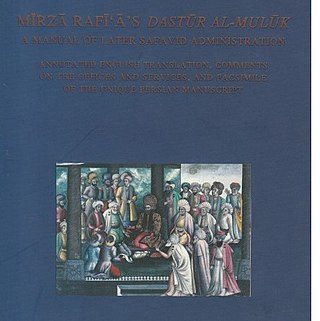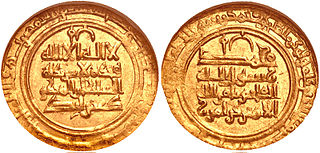
Yazd, formerly also known as Yezd, is the capital of Yazd province, Iran. The city is 270 km (170 mi) southeast of Isfahan. At the 2016 census, its population was 529,673. Since 2017, the historical city of Yazd is recognized as a World Heritage Site by UNESCO.

Amol is a city in, and the capital of, the Central District of Amol County, Mazandaran province, Iran, and also serves as capital of the county.

An Iranian architect is traditionally called a mi'mar.
Sayyida Shirin, also simply known as Sayyida (سیدا), was a Bavandid princess, who was the wife of the Buyid amir (ruler) Fakhr al-Dawla.

Dastūr al-Mulūk by Moḥammad Rafiʿ Anṣāri known as Mirzā Rafiʿā is one of only three surviving administrative handbooks from early 18th-century Safavid Iran and an important research tool for scholars in Iranology. The Persian manuscript was edited during the 1960s by the Iranian scholar Mohammad Taqi Danesh Pajouh.

The Kakuyids were a Shia Muslim dynasty of Daylamite origin that held power in western Persia, Jibal and Kurdistan. They later became atabegs (governors) of Yazd, Isfahan and Abarkuh from c. 1051 to 1141. They were related to the Buyids.

Iraj Afshar was a bibliographer, historian, scholar, professor, and an iconic figure in the field of Persian studies. Afshar was a professor emeritus of the University of Tehran. He was a consulting editor of Encyclopædia Iranica at Columbia University.

Masʽud I of Ghazni, known as Amīr-i Shahīd, was sultan of the Ghaznavid Empire from 1030 to 1040. He rose to power by seizing the Ghaznavid throne from his younger twin Mohammad, who had been nominated as the heir upon the death of their father Mahmud of Ghazni. His twin was shortly blinded and imprisoned. However, when much of Masʽud's western domains had been wrested from his control, his troops rebelled against him and reinstated Mohammad to the throne.

Abarkuh is a city in the Central District of Abarkuh County, Yazd province, Iran, and serves as capital of the county.

Abd al Ḥosayn Ayati (1871—1953) was an Iranian convert to the Baháʼí Faith, who later converted back to Islam and wrote several polemic works against his former religion. He was known among Baháʼí circles as Avarih and is regarded as an apostate. In his later years he served as a secondary school teacher while writing poetry and history, and was regarded as a competent orator.

Muhammad ibn Rustam Dushmanziyar, also known by his laqab of Ala al-Dawla Muhammad, was a Daylamite military commander who founded in 1008 the short-lived but important independent Kakuyid dynasty in Jibal. He is also known as Pusar-i Kaku, Ibn Kakuyeh, Ibn Kakuya, and Ibn Kaku, which means maternal uncle in the Deylami language, and is related to the Persian word "kaka". Muhammad died in September 1041 after having carved out a powerful kingdom which included western Persia and Jibal. However, these gains were quickly lost under his successors.

Abu Mansur Faramurz, mostly known as Faramurz, was the Kakuyid Emir of Isfahan. He was the eldest son of Muhammad ibn Rustam Dushmanziyar. In 1051, He was defeated by Tughril, sultan of the Seljuk Empire, and became his vassal. Faramurz later died after 1063, probably in the 1070s.
Garshasp I ibn Muhammad, mostly known as Garshasp I, was the Kakuyid emir of Hamadan, including Nihawand, Borujerd and western Jibal. He was the youngest son of Muhammad ibn Rustam Dushmanziyar, and was the vassal king of his brother Faramurz. In 1047, the Seljuqs defeated his forces and seized Hamadan, which forced him to flee to Buyid territory, where he became governor of Khuzistan. In ca. 1050, Garshasp sent an army to aid the Ghaznavid ruler Maw'dud in his wars with the Seljuqs. Garshasp later died in 1051/2 in Khuzestan.
Ali ibn Faramurz, was the Kakuyid Emir of Yazd and Abarkuh. He was the son of Faramurz.
Garshasp II, was the last Persian Kakuyid Emir of Yazd and Abarkuh. He was the son of Ali ibn Faramurz.
The following is a timeline of the history of the city of Mashhad, Iran.
The following is a timeline of the history of the city of Kerman, Iran.
Khadija Arslan Khatun was a Seljuk princess, sister of sultan Alp Arslan (r.1063–1072) and Aunt of sultan Malik Shah. She was a royal consort of Abbasid caliph Al-Qaim, and then a consort of Kakuyid ruler Ali ibn Faramurz.











